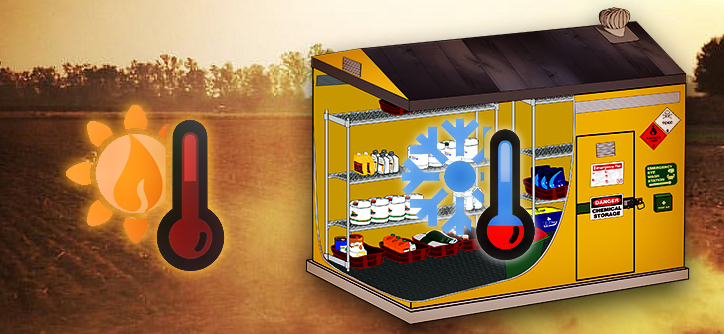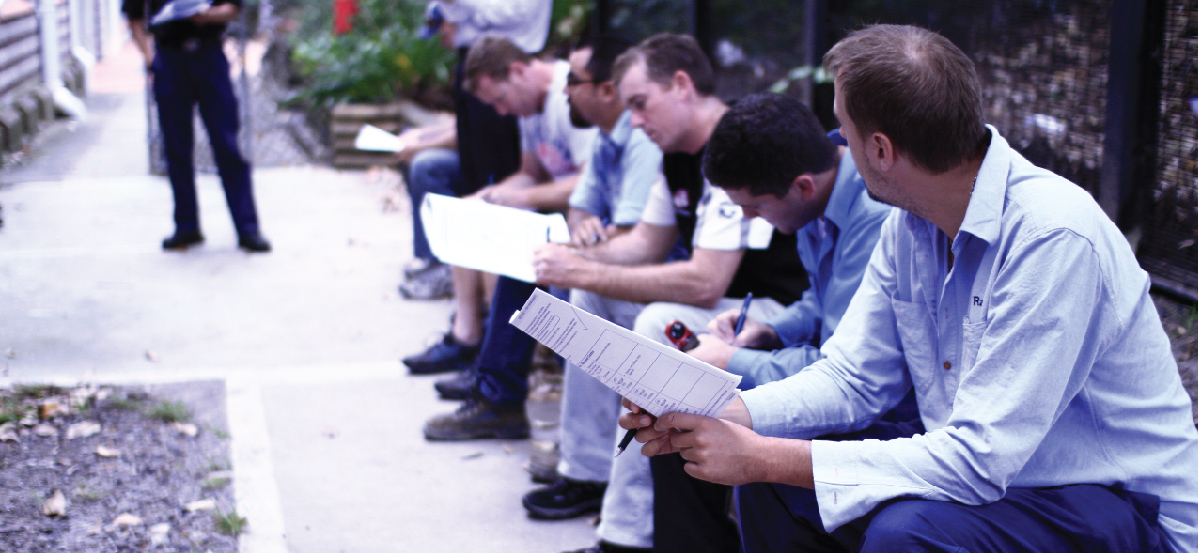In the extreme heat of the summer months, Agsafe published an article with five tips to help ensure chemical safety and product integrity, even when the barometer hits 40 degrees.
Chemicals are meant to be stored at between 5 and 38 degrees Celsius and out of direct sunlight, as heat can reduce the effectiveness of a product and UV radiation can degrade plastics, making containers unsafe for both handling and transportation.
What can be done to help keep chemicals cool and safe?
Agsafe lists 5 actions:
1. Read the label : first step is to check on labels and safety data sheets which products are heat and UV sensitive, so that they can be moved into cooler and darker storage areas. The Storage and Disposal section of a product label found in General Instructions, tells the user to keep the product out of direct sunlight and in a cool ventilated storage facility as a general rule for good reason.Check the DOM or date of manufacture section on a drum label front or back cover and always use up old stock first, avoiding more than one summer of storage if possible. When purchasing seek the freshest (youngest) products available. Vet chemicals/medicines will have an expiry date, so make sure these dates are recorded on your inventory storage record.
2. Keep chemicals out of direct sunlight : UV radiations and high temperatures could compromise the quality of the product. If the chemicals can’t be moved, they can be covered with a tarpaulin until a permanent solution is found. Insecticides such as methomyl in aqueous solution have been shown to suffer significant loss in potency and efficacy in response to prolonged exposure to UV light and high temperature (45 degrees Celsius). Hence decanting chemicals in field is not recommended both in terms of environmental and personal safety as well as concerning the longevity of the chemical.
3. Install an extractor fan to draw in cooler air and lower the temperature. Use your Kestrel weather meter to take the temperature in your chemical shed on a hot sunny day to determine how hot it gets inside and if it’s above 38 degrees, take action to prevent further heat buildup through the steps listed.
4. Increase ventilation , opening doors and windows on hot days, if it’s safe to do so. Cross flow louvres on opposing walls also help with ventilation. If your rural reseller is relatively close to your workplace and keeps good stocks of the chemicals you use, only keep a bare minimum of products on hand and use their Agsafe accredited facility.
5. Install a temperature-controlled unit with insulation construction, to control extremes of heat and cold.
If these are not economic because only small quantities of pesticides are held, then you may consider a solar powered exhaust fan in the roof of the chemical shed. There are a number of solar exhaust or extractor fans on the market which have considerably more capacity (SolarWhiz claims up to 20 x more) in terms of heat extraction than a standard whirligig and are ideal in areas without mains power.
Solar exhaust fans are stated to lower temperatures by up to 5 degrees Celsius. They also help to get rid of damp moist air (in winter) which is beneficial for the storage of solid formulations such as powders or granules, as well as expelling any noxious gases/vapours contained in the confined space of chemical storage areas (shipping containers and specialty built sealed cabinets). Click here for a link to a comparison chart on providers of roof ventilation .
For more information on chemicals storage read our older post Storage Guide for Hazardous Chemicals .
For a more holistic approach to safe handling and storage of chemicals, enrol in a ChemCert AQF3 Chemical Accreditation course .




